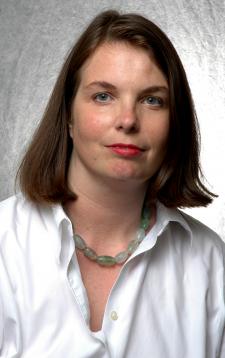
FAYETTEVILLE, Ark. – A University of Arkansas researcher examined trends in model houses in the post-World War II era and found that they represent a transformation in cultural and domestic life that continues to influence housing today.
“There were so many changes in the built environment in that era,” said Catherine Wallack, assistant professor of interior design. Her article “Dream Home: Remodeling American Expectations with Model Houses” was published in the December issue of The Journal of American Culture. “That era set the tone for the way people are developing houses now.”
The social landscape changed in the late 1940s, as thousands of returning veterans used the GI Bill to improve their lives and women who had entered the workforce during World War II struggled with retracting roles. The changing environment created uncertainty, but the GI Bill allowed returning veterans to purchase homes at a rate not possible before the war.
“Model homes satisfied a public thirst for housing,” Wallack said. They also showed houses as objects to be admired and status symbols as well as shelters to live in.
Technology drove much of the novelty found in model houses of that era – everything from the latest appliances to televisions and remote controls to retractable toothbrushes. Some builders offered televisions as part of the mortgage, making them more affordable and widespread than they had been before World War II.
The model houses of the era also shifted from focusing on public space to emphasizing the private space of the home. Front porches became less common, while the backyard grew in size and importance – a trend that is still found in many of today’s suburbs. For the first time, people had “hobby rooms” and guest bedrooms.
“In the late 1940s, participating in public life became less meaningful and the design of houses was an expression of these changed values,” Wallack said. “It’s a different sort of lifestyle completely” from the era that preceded it.
This shift in lifestyle particularly affected women. The emphasis on technology suggested efficient, controllable environments that would allow a refuge from the outside world, as well as a private space for entertaining.
“These model houses provided an idealized image of a substitute life,” Wallack said, “including a glamorized version of the housewife.” In these post-war environments, women could envision themselves entertaining in a Dior dress, whereas the 1930s image might be of a woman standing at a stove cooking. Both of these images stood in stark contrast to the World War II depiction of Rosie the Riveter.
“In these model homes, women are offered efficient, technologically advanced workplaces – a superficial solution to a complex, deeply felt dilemma,” Wallack wrote.
Wallack singles out two model houses in particular: The All-Electric House, which was built by a utility company and located in Kansas City, and the Postwar House, which was built by a builder in Hollywood. Although different sponsors in different locations built the two houses, they shared many characteristics: The integration of electronics and technology, the scale of the homes and the fact that both were planned to accommodate visitors, not homeowners. Hundreds of thousands of people visited these and hundreds of other model houses during the late 1940s to the early 1950s.
One thing has changed since the advent of these model homes: The scale of the houses being built.
“These ideal houses had three bedrooms, but they were small by today’s standards,” Wallack said.
Wallack is a professor in the School of Human Environmental Sciences in the Dale Bumpers College of Agricultural, Food and Life Sciences.
Topics
Contacts
Catherine Wallack, assistant professor, interior design
School of Human Environmental Sciences
479-575-7599, cwallack@uark.edu
Melissa Blouin, director of science and research communication
University Relations
479-575-3033,
blouin@uark.edu